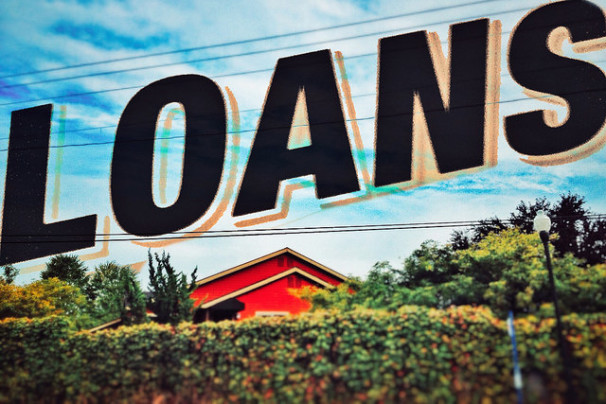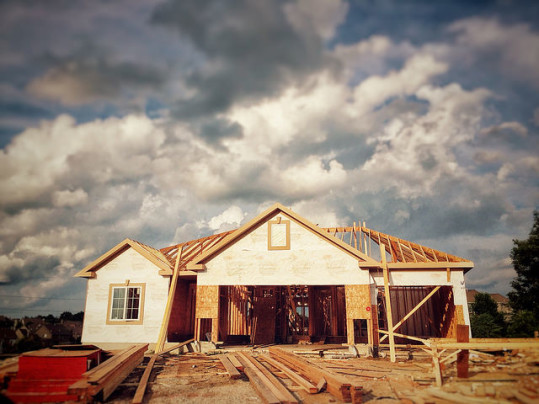Choosing a place to live involves many different factors. From the type of kitchen you want to the school district and the commute to work, there are a lot things to take into consideration. But there are also things that you can’t possibly know, like what your prospective neighborhood will look like in 10 years. A lot can change in a decade. For that reason, LendingTree recently analyzed a number of metropolitan areas in an effort to narrow down which are changing fastest in terms of home prices, crime rates, building permits, commute times, income, rent, etc. On a scale from 1 to 100, cities were ranked in terms of how much change they underwent in particular categories between 2006 and 2016. According to the results, the most rapidly changing U.S. cities are in Texas, with Austin, Dallas, and Houston filling the top three positions on the list. Home prices were the big mover in all three cases, with each city ranking in the top five among 50 cities. The least changed cities overall included Birmingham, Ala., Milwaukee, and New Orleans. Also among the results, the top five cities for percent of residents who moved into their homes since 2010 were Las Vegas, Phoenix, Austin, Orlando, and Denver. More here.
Archive for October 2017
Mortgage Demand Rises As Rates Stay Flat
Average mortgage rates were a mixed bag last week, according to the Mortgage Bankers Association’s Weekly Applications Survey. The average contract interest rate for 30-year fixed-rate mortgages with conforming loan balances dropped slightly, while jumbo loans and 15-year fixed-rate mortgages saw interest rates rise. The average rate for loans backed by the Federal Housing Administration, on the other hand, was unchanged from one week earlier. Joel Kan, an MBA economist, told CNBC rates were up earlier in the week only to fall by Friday. “Treasury yields were relatively flat last week,” Kan said. “While the FOMC minutes showed an increased likelihood of one more rate increase in 2017, nudging rates slightly higher, the week’s gains were offset by a downturn on Friday due to weaker than expected inflation data.” Whatever the case, relatively steady rates led to an increase in both refinance and purchase application demand. In fact, total mortgage demand was up 3.6 percent as hopeful home buyers and homeowners looking to refinance aimed to take advantage of still-low mortgage rates. The MBA’s weekly survey has been conducted since 1990 and covers 75 percent of all retail residential mortgage applications. More here.
Builders Feel More Confident In New Home Market
As a home buyer or seller, you may not give much thought to how builders feel about the market for newly built homes. But, whether you know it or not, it can make a difference in the price you pay for your house. That’s because, the more new homes being built in your market, the more houses there are for buyers to choose from. And more choices means less competition for available properties and less upward pressure on prices. In short, if builders feel confident, they build more homes, which helps keep prices from spiking. Because of this, the National Association of Home Builders tracks builder confidence each month on a scale where any number above 50 indicates that more builders feel market conditions are good than poor. In October, the index rose four points to 68. Robert Dietz, NAHB’s chief economist, says it’s a good sign that the new home market will continue to grow. “It is encouraging to see builder confidence return to the high 60s level we saw in the spring and summer,” Dietz said. “With tight inventory of existing homes and promising growth in household formation, we can expect the new home market to continue to strengthen at a modest rate in the months ahead.” More here.
How To Make Buying A House Less Complicated
When asked, Americans overwhelmingly say they value homeownership and believe it increases financial stability. In fact, one recent survey found 93 percent of respondents said they felt that homeownership was an important part of the American dream. Still, despite their desire to buy and own a home, many Americans hesitate before pursuing their dream of becoming homeowners. And while there are many reasons for this, one of them is misconceptions about the home buying process. NeighborWorks America’s fifth annual national housing survey, for example, found a growing number of respondents who say the home buying process is confusing. According to the results, 74 percent of adults said they strongly or somewhat agree that “the home buying process is complicated.” That’s up from 67 percent last year. What accounts for the increase is anybody’s guess but it reinforces the fact that prospective buyers should make choosing a reputable lender and real estate agent among the first steps they take after deciding to buy a home. Working with experienced professionals will demystify the buying process and help you navigate the ins-and-outs of purchasing a house. More here.
City Life May Be Healthier Than In The Suburbs
Some people are drawn to urban locations and all of the perks of city life. Others, value the extra space and privacy that the suburbs provide. Whichever side of the debate you’re on, you may not have considered the benefits of one over the other from a health perspective. Fortunately, researchers from Oxford University and the University of Hong Kong have. Their findings may surprise you. That’s because, after looking at health outcomes of people who lived in cities compared to those who live in less densely populated areas, the research found city dwellers were healthier than their suburban counterparts. The reason is simple. People who live in the suburbs are more likely to need a car to get from place to place, while in urban areas residents tend to be able to walk to their destination. Chinmoy Sarkar, a co-author of the study, thinks there’s a way to have the best of both worlds. He told the Thomson Reuters Foundation that, with the help of policy makers, “we can plan multifunctional, attractive neighborhoods that promote physical activity, promote social interaction, and shield from negatives such as pollution and feeling unsafe.” More here.
List Ranks Top Cities For Trick-Or-Treating
If you have kids – or have ever been one yourself – you know that Halloween is an important time of year. The opportunity to amass large quantities of free candy is irresistible to most kids. Combine that with the chance to dress up in costume and parade through the streets and Halloween becomes one of the year’s most anticipated days. Because of this, Zillow ranks the best cities for trick-or-treating each year. Their rankings are based on home values, the share of population under 10 years old, and single-family home density. This year, five of the top 10 cities are in California, with San Francisco topping the list. Of course, much of that has to do with higher home values in the West, but kids in Los Angeles, Sacramento, San Jose, and Long Beach can look forward to a happy Halloween this year. Other cities that made the top 10 included Philadelphia, Baltimore, Washington D.C., Milwaukee, and Seattle. But regardless of where you are, Dr. Svenja Gudell, Zillow’s chief economist, says there’s a surefire way to tell the best local neighborhoods for trick-or-treating. “These are places we think will have plenty of candy and lots of young kids running around from door to door,” Gudell says. “If you don’t live in one of these cities, look for areas that are getting into the Halloween spirit with decorations and lots of costumed kids.” More here.
Mortgage Rates Rise To Three Month High
Average mortgage rates moved higher last week, according to new data from the Mortgage Bankers Association. Their Weekly Applications Survey found rates up across all loan categories, including 30-year fixed-rate loans with both conforming and jumbo balances, loans backed by the Federal Housing Administration, and 15-year fixed-rate loans. Mortgage rates are now at their highest point since July. Joel Kan, an MBA economist, told CNBC the increase was due to positive economic news. “Data released last week, on balance suggested continued strong economic growth,” Kan said. “In combination with hawkish comments from some Fed officials, this pushed rates up. The 30-year fixed rate increased 4 basis points to reach its highest level since July.” But though rates did move upward, it’s important to remember that they’re still well below what’s been considered normal historically. Which is likely why last week’s rate increase didn’t cause a big drop in demand for mortgage applications among potential home buyers. In fact, demand was virtually unchanged from the previous week. The MBA’s weekly survey has been conducted since 1990 and covers 75 percent of all retail residential mortgage applications. More here.







